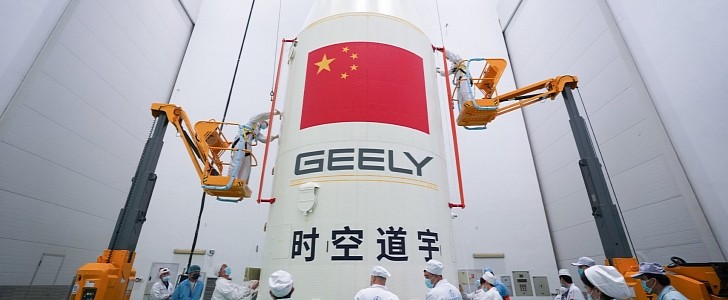Even as commodities required to build EVs get scarce and geopolitical issues crumble supplies, the electric vehicle train isn’t about to stop. As industry stakeholders fight for crumbs of the EV pie, China is hot on Tesla’s heels, asserting itself as a market leader. On Wednesday, China’s Zhejiang Geely Holding Group conducted its first successful satellite launch, Reuters reported.
Tesla CEO Elon Musk’s SpaceX has more than 2,000 satellites in orbit for its Starlink network, so Geely becomes the second major automaker globally to have an allied space business.
Geely is looking to build its own satellite network to offer more accurate navigation for autonomous vehicles. The company launched its self-designed GeeSAT-1 from Xichang Satellite Launch Center in southwest Sichuan. The company said it expects to launch another 63 in orbit by 2025 and eventually have a maximum of 240.
While just coming to the limelight, autonomous driving technology has been in research for several years. Satellites are a big part of the technology, and as EVs evolve, the need for driverless cars is sparking a new space race.
Low Earth orbit satellites such as the Starlink network and Geely are crucial in processing vast amounts of data required by cars for autonomous driving. According to a recent study, autonomous vehicles will generate an estimated 40 terabytes of data in an hour from cameras, radar, and other sensors.
The Chinese automaker said apart from offering high-precision positioning support for self-driving vehicles. Its network will serve other commercial functions, such as providing communication services.
Since the satellites have an operating lifespan of five years, the company expects them to eventually disintegrate into the earth’s atmosphere without leaving any space debris.
Earlier in the year, the SpaceX Falcon 9 rocket carried up to 46 Starlink satellites to low Earth orbit after a geomagnetic storm fried 40 satellites.
While most new cars come with a modem that lets them receive data through cellphone towers, the same can’t be applied to autonomously driven vehicles. As EVs advance, there’s a need for constant updates and real-time location accuracy, only available through satellite technology.
Geely is looking to build its own satellite network to offer more accurate navigation for autonomous vehicles. The company launched its self-designed GeeSAT-1 from Xichang Satellite Launch Center in southwest Sichuan. The company said it expects to launch another 63 in orbit by 2025 and eventually have a maximum of 240.
While just coming to the limelight, autonomous driving technology has been in research for several years. Satellites are a big part of the technology, and as EVs evolve, the need for driverless cars is sparking a new space race.
Low Earth orbit satellites such as the Starlink network and Geely are crucial in processing vast amounts of data required by cars for autonomous driving. According to a recent study, autonomous vehicles will generate an estimated 40 terabytes of data in an hour from cameras, radar, and other sensors.
The Chinese automaker said apart from offering high-precision positioning support for self-driving vehicles. Its network will serve other commercial functions, such as providing communication services.
Since the satellites have an operating lifespan of five years, the company expects them to eventually disintegrate into the earth’s atmosphere without leaving any space debris.
Earlier in the year, the SpaceX Falcon 9 rocket carried up to 46 Starlink satellites to low Earth orbit after a geomagnetic storm fried 40 satellites.
While most new cars come with a modem that lets them receive data through cellphone towers, the same can’t be applied to autonomously driven vehicles. As EVs advance, there’s a need for constant updates and real-time location accuracy, only available through satellite technology.
A historical moment of the first nine Geespace satellites launched. 63 more are expected to be placed in orbit by 2025. pic.twitter.com/O3kiMeuJt8
— Geely Group (@GeelyGroup) June 2, 2022







